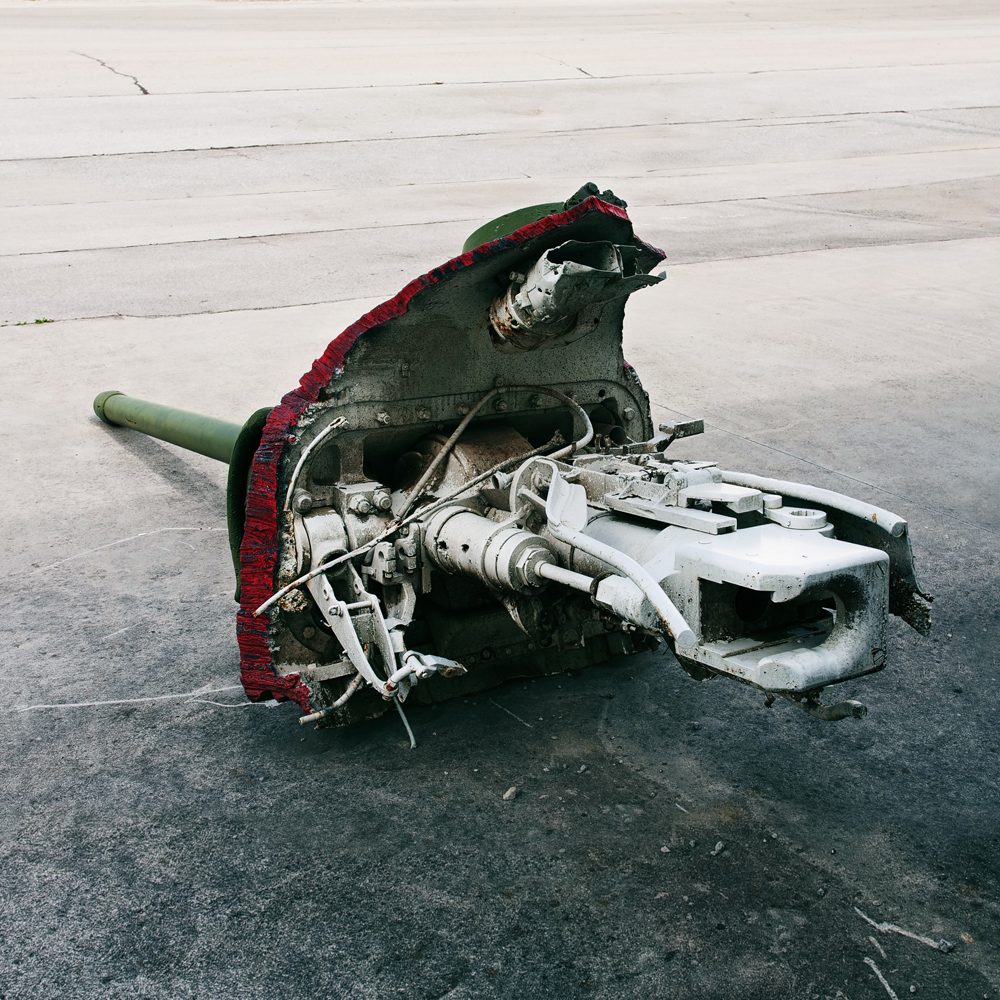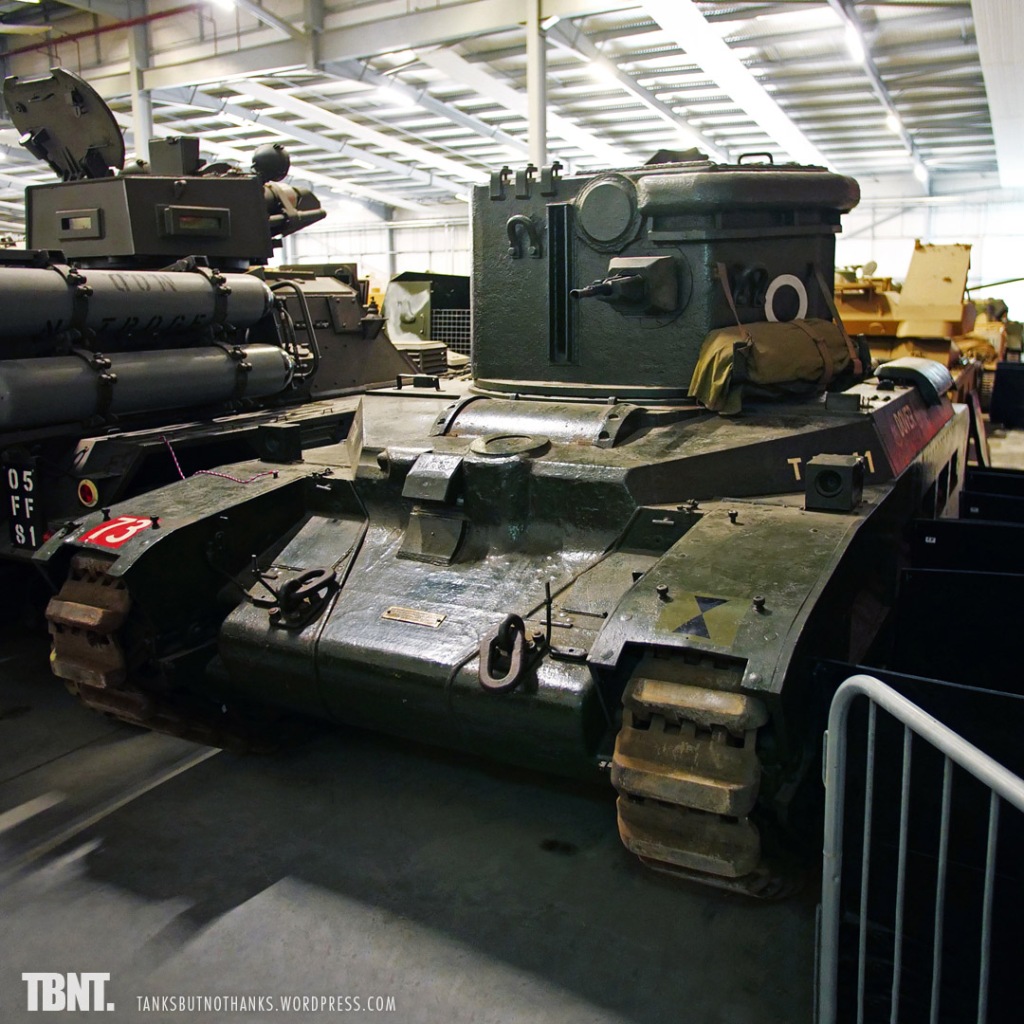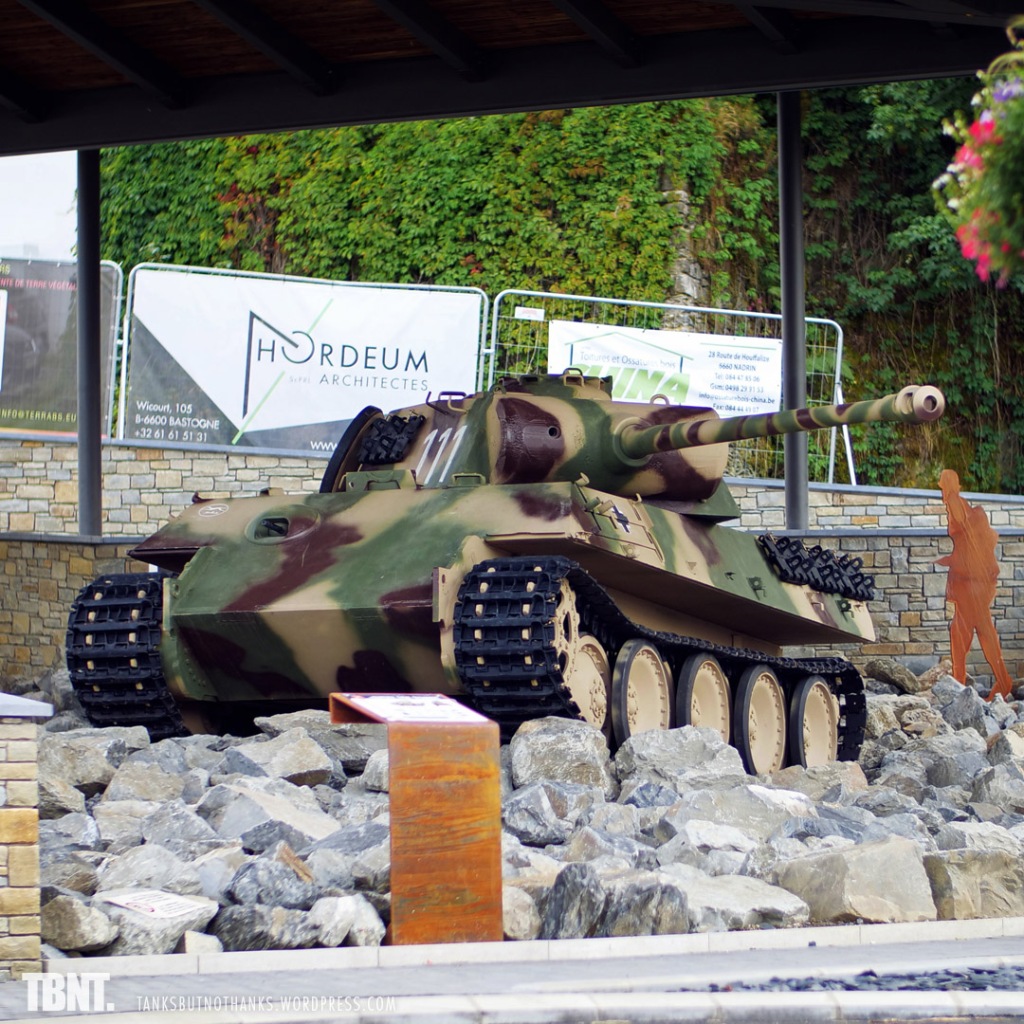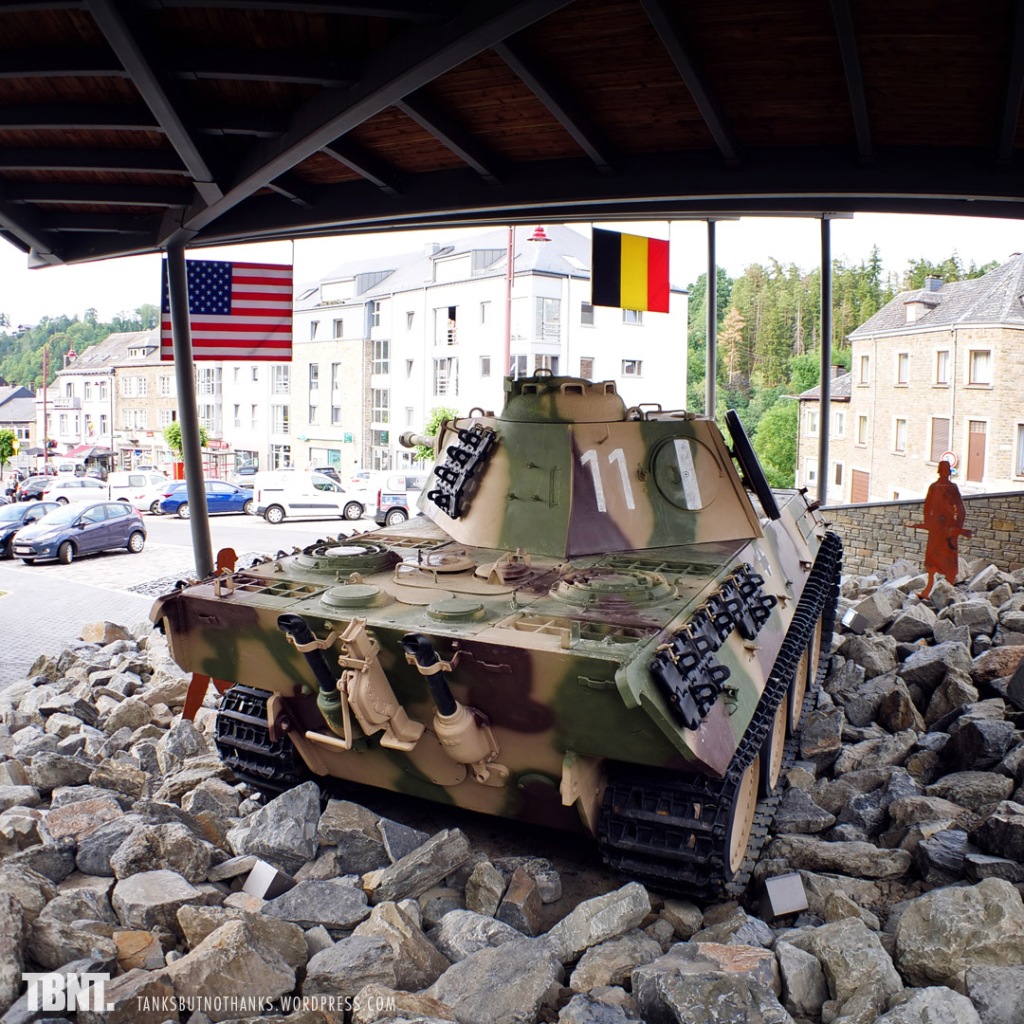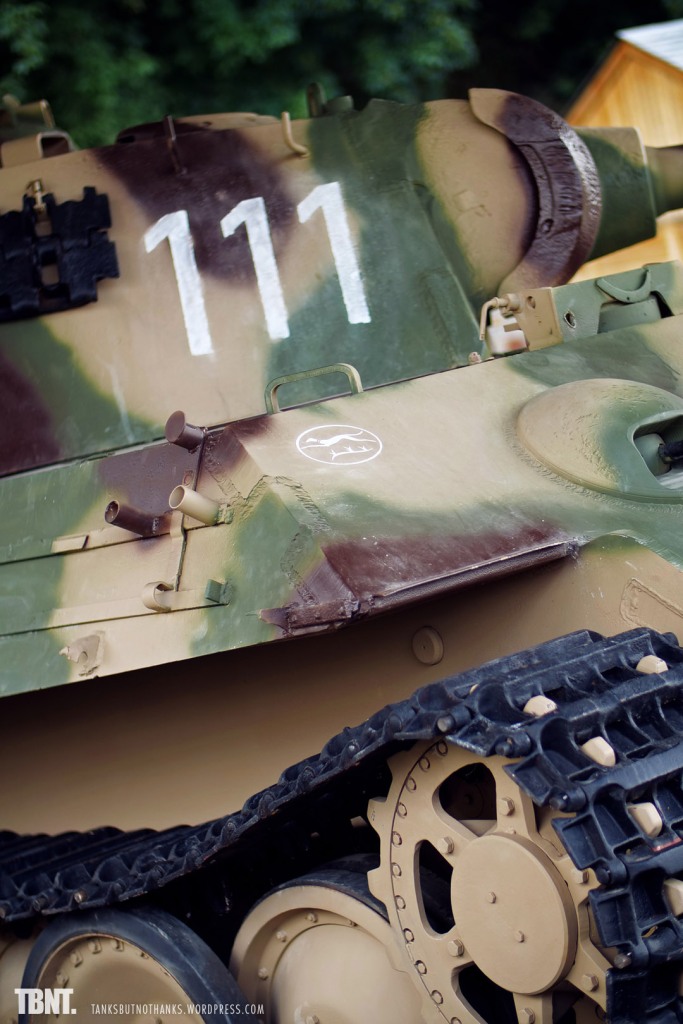-
Panzerkampfwagen VI Tiger Ausf. E (Sd.Kfz. 181, Late Production)
Type: Heavy Tank
Nation: Germany
Period: World War 2
Location: Deutsches Panzermuseum Munster, Germany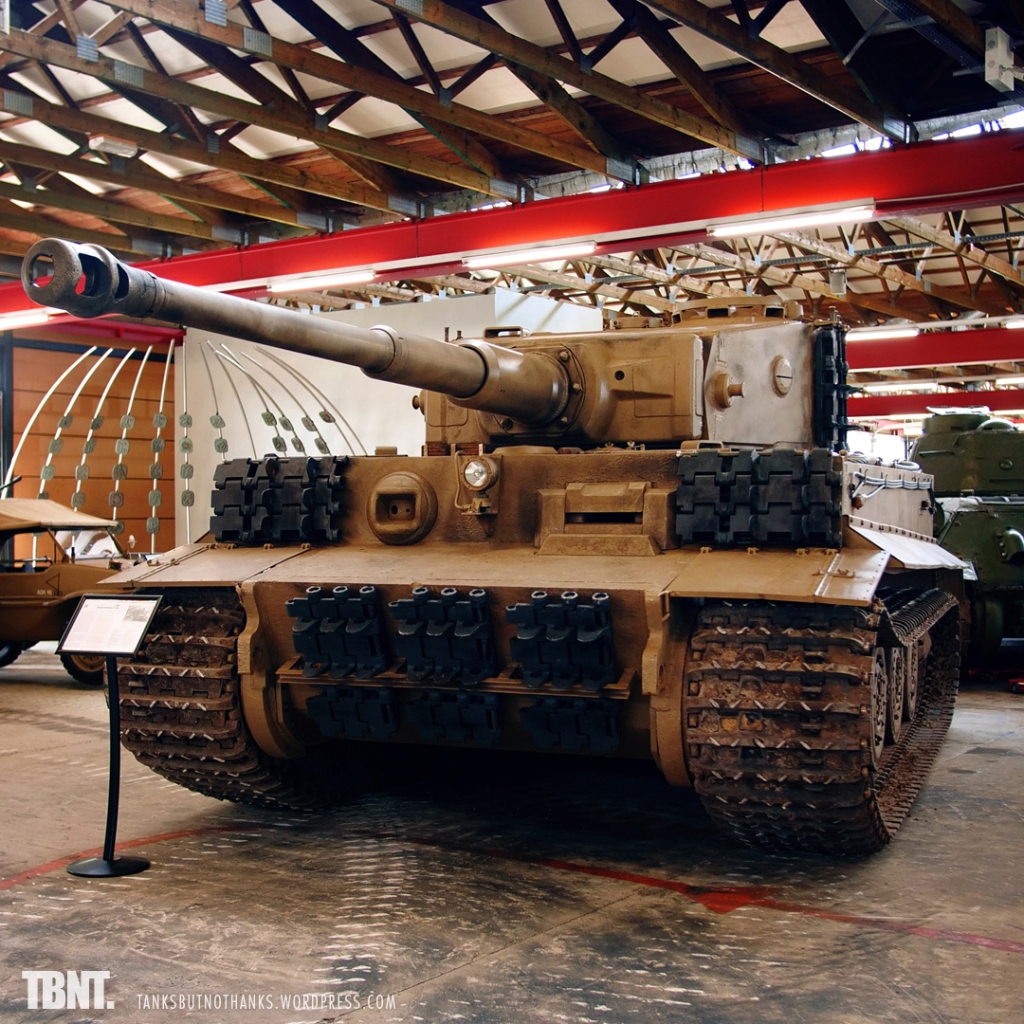
Ambivalent legend
The Tiger first appeared on the battlefield in 1942 and outclassed all other contemporaries in regards to size, weight, firepower and armour protection. Feared by Allied soldiers for its toughness and praised by Nazi Germany‘s propaganda machine as a wonder weapon, this heavy breakthrough tank had soon earned a legendary status all over the world – which still remains unchanged today, although its high production cost, poor reliability and dubious deployment make it clear that the Tiger was far from a war-winning super tank.
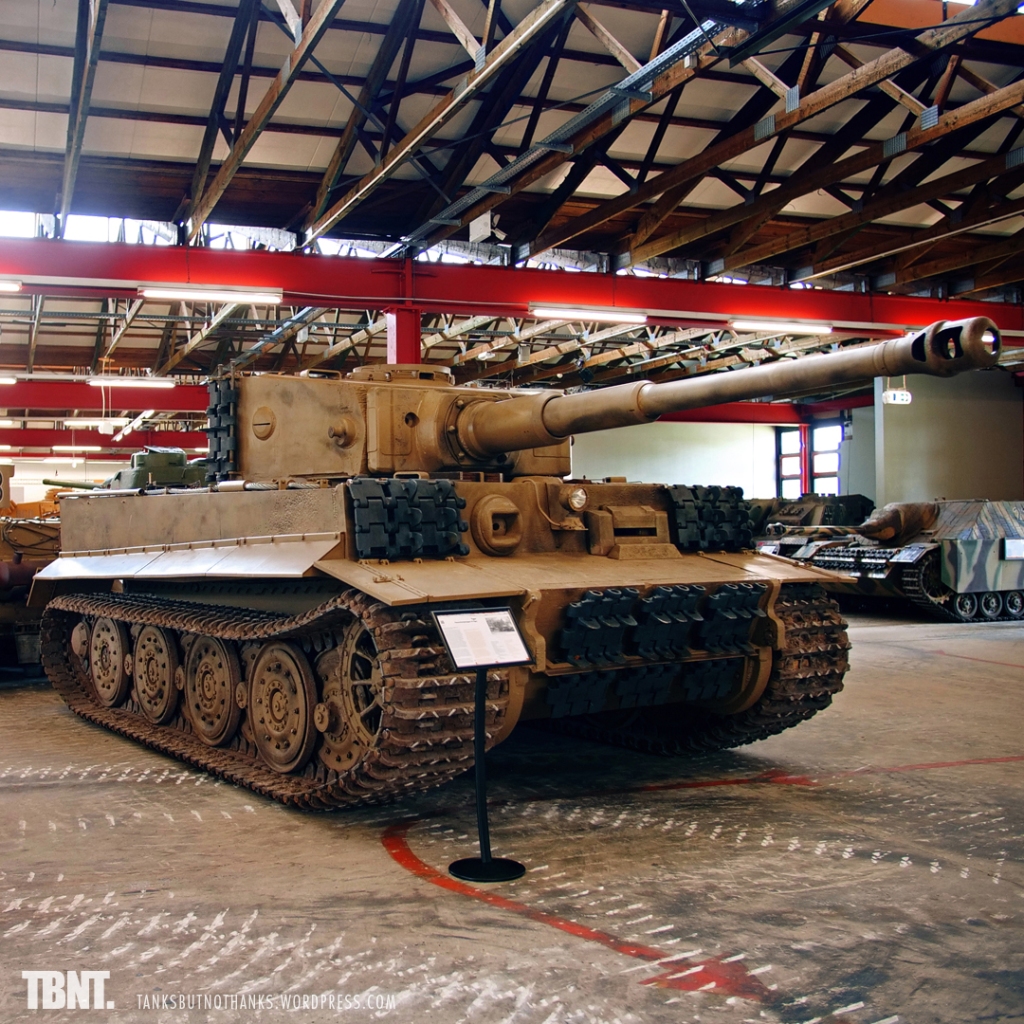
Work in progress
This particular vehicle was assembled by the private collector Mr. Hoebig. About two thirds of the hull and turret consist of restored historic parts that were salvaged from several different Tiger wrecks – most notably from a tank scrapyard at Troun, France, where numerous vehicles destroyed in the Falaise Pocket had ended up. The other third was made of custom-machined components. Except for the torsion bar suspension the interior is almost empty for the time being. There is no engine or gearbox inside yet, but Mr. Hoebig‘s goal is to build a complete Tiger.
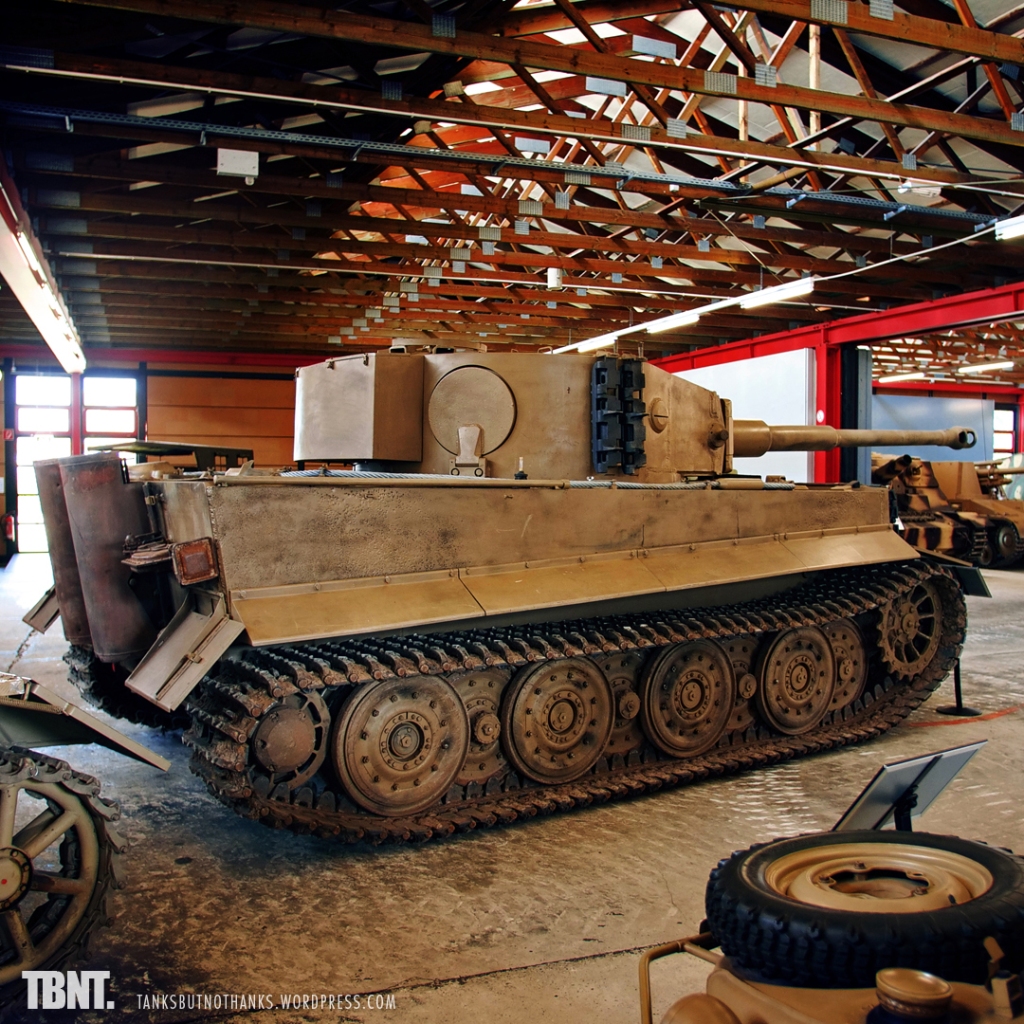
Surprise guest
This “Frankentiger” resembles a late-production vehicle including a low commander’s cupola with periscopes, a monocular gunner‘s sight, rubber-saving all-steel road wheels and a single centred headlight. The tank made its first public appearance at the Oorlogsmuseum Overloon‘s Militracks 2023 event where it was towed around by three huge 18-ton Sd.Kfz. 9 FAMO halftracks. It briefly returned to Overloon for Militracks 2024 before it was directly transferred to the Deutsches Panzermuseum Munster in late May. It was announced that the Tiger would stay there on loan for at least two years.


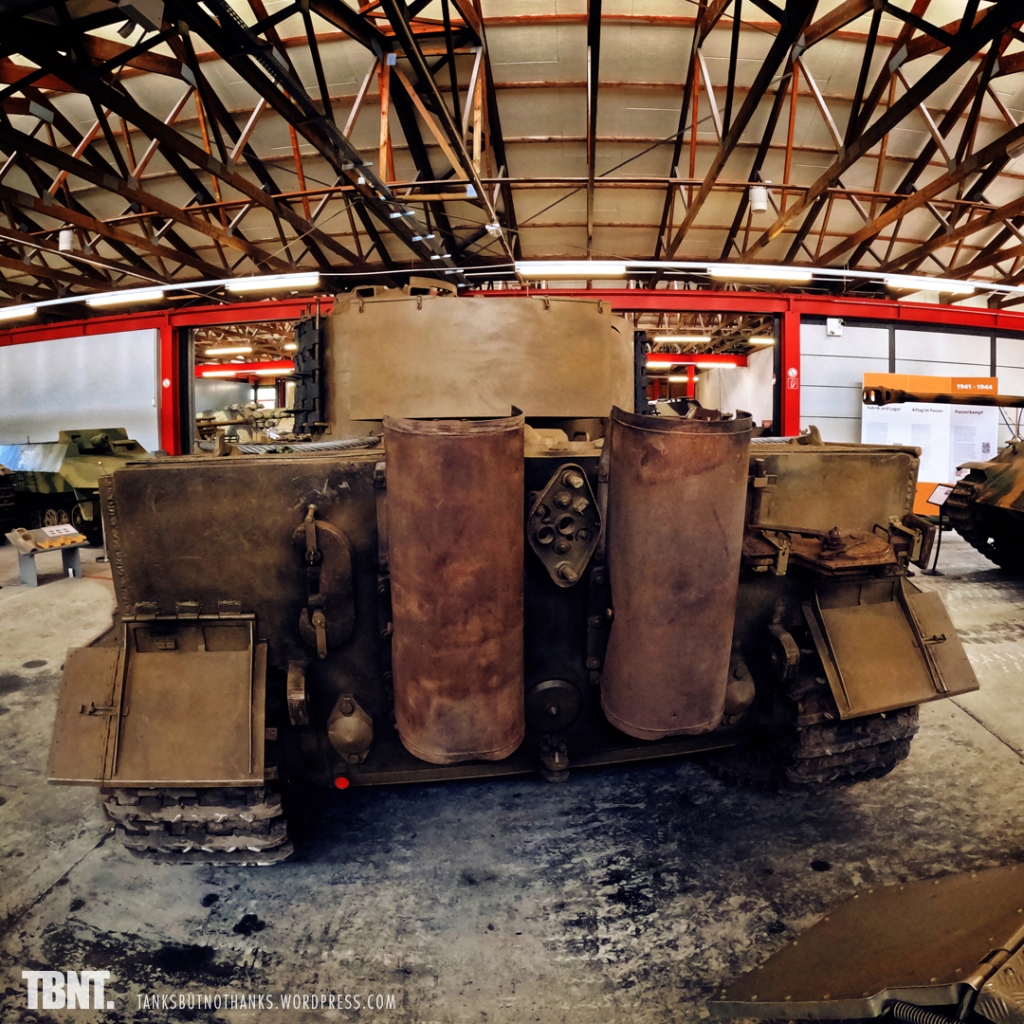
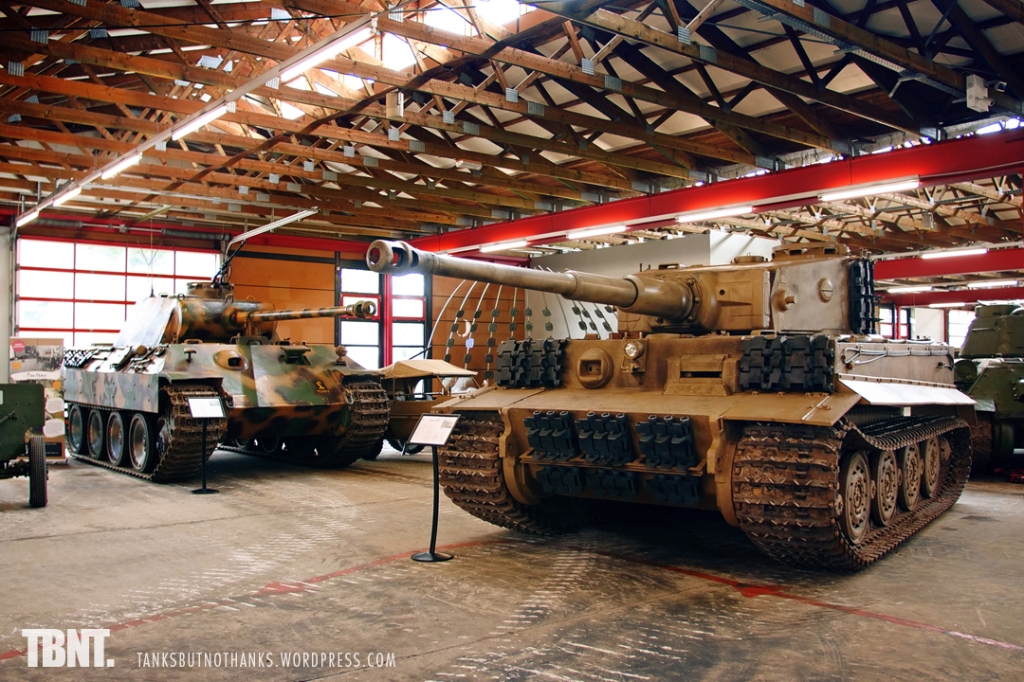
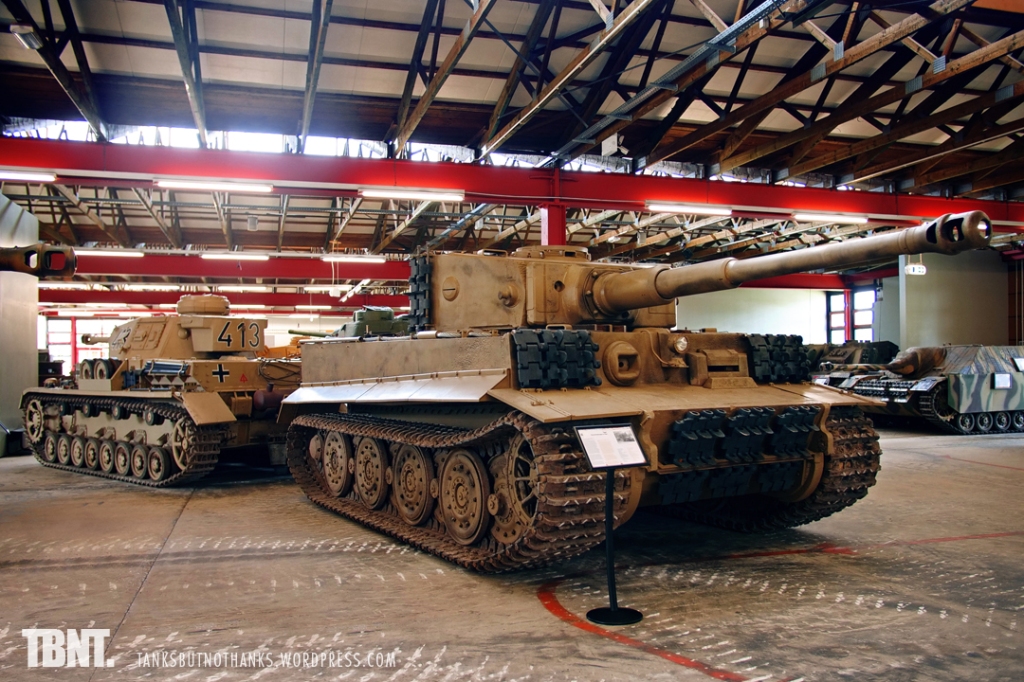

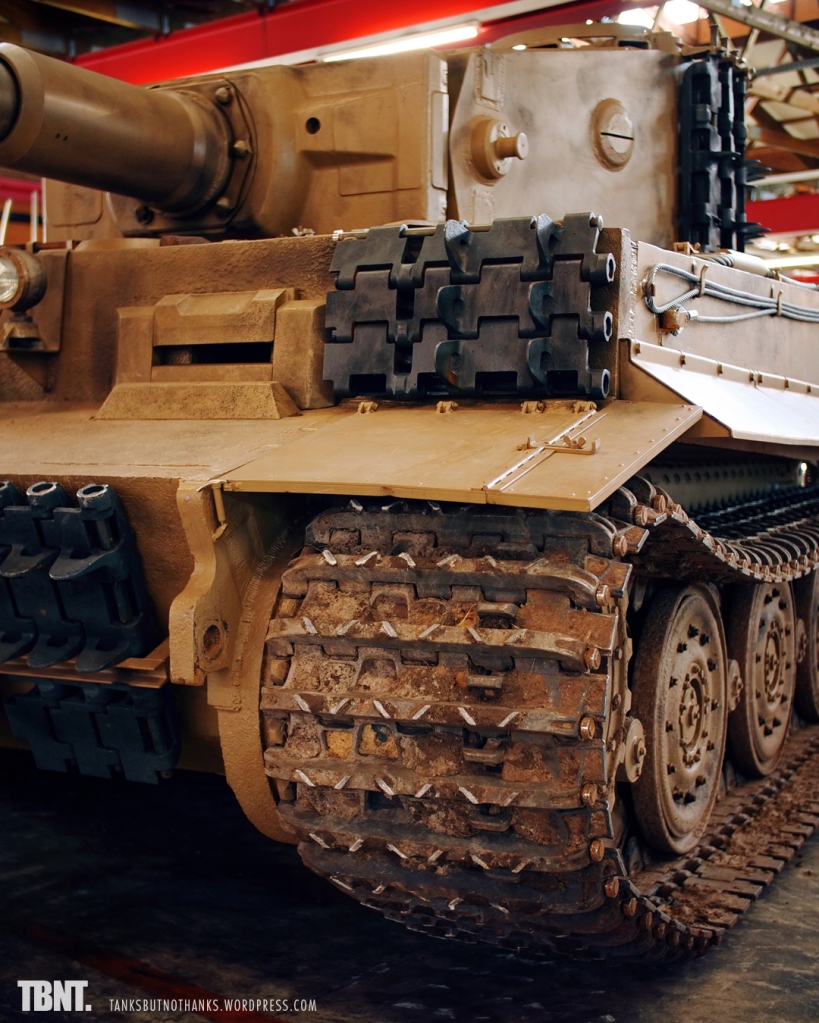
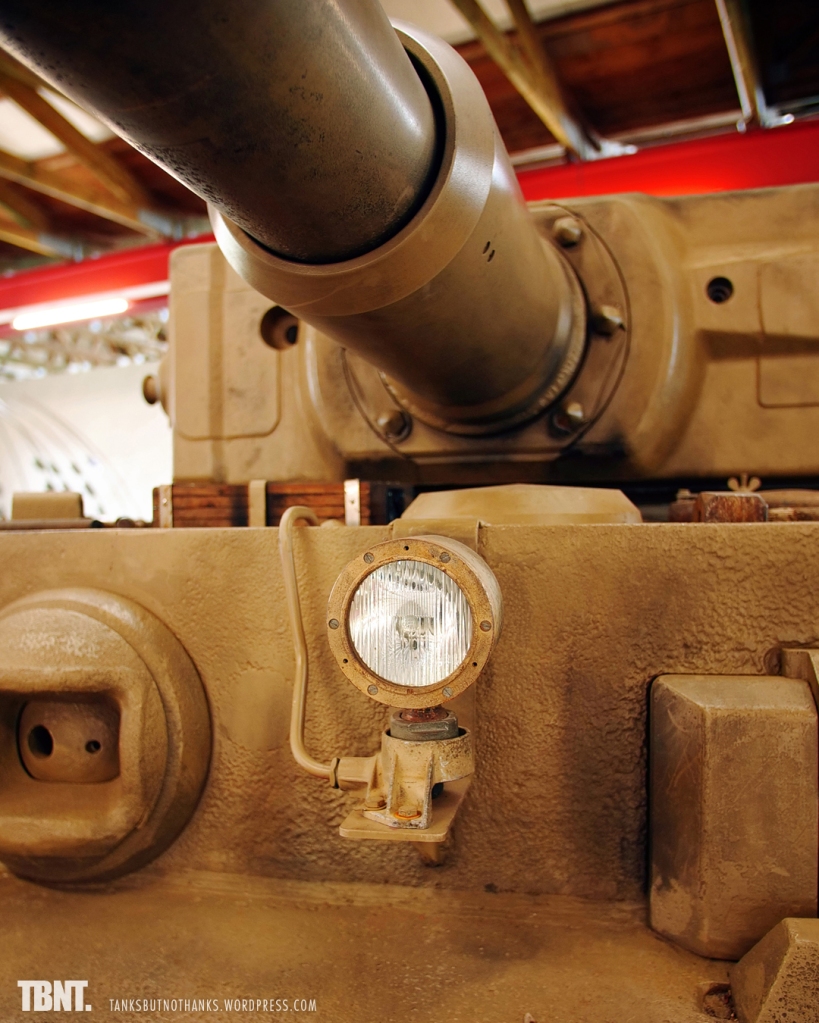
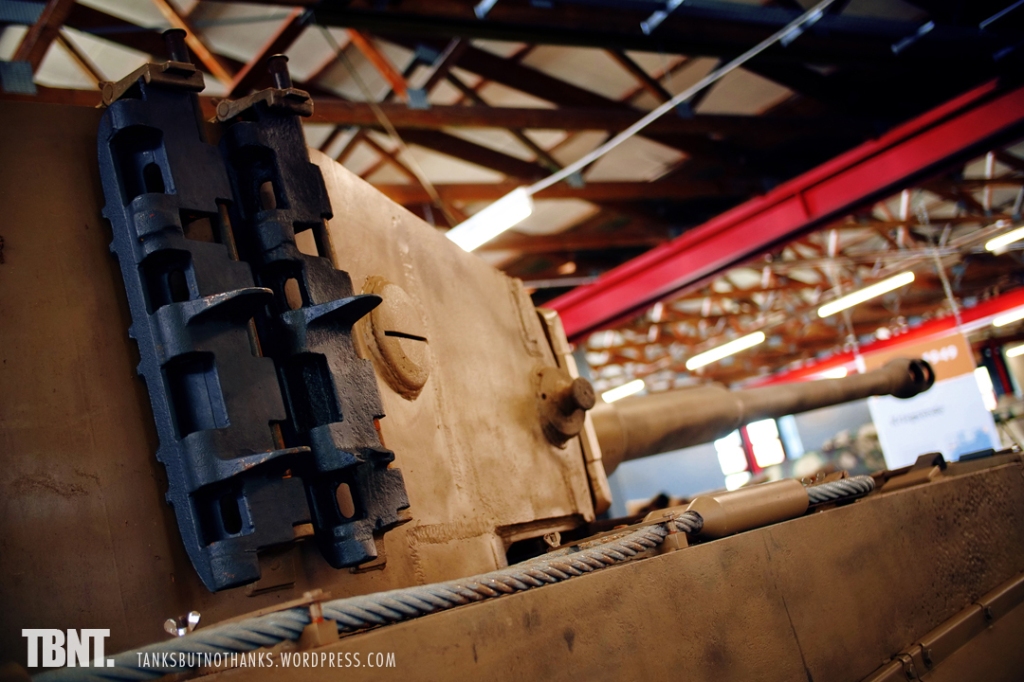
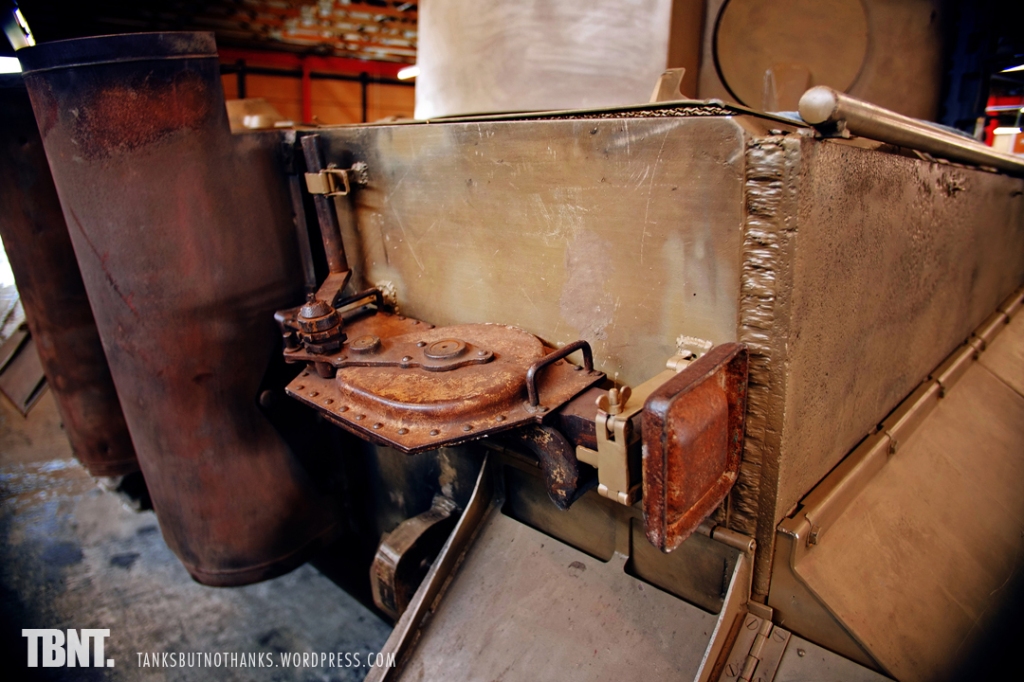

-
TKS
Type: Light Tank
Nation: Poland
Period: World War 2
Location: Muzeum Broni Pancernej w Poznaniu, Poznań, Poland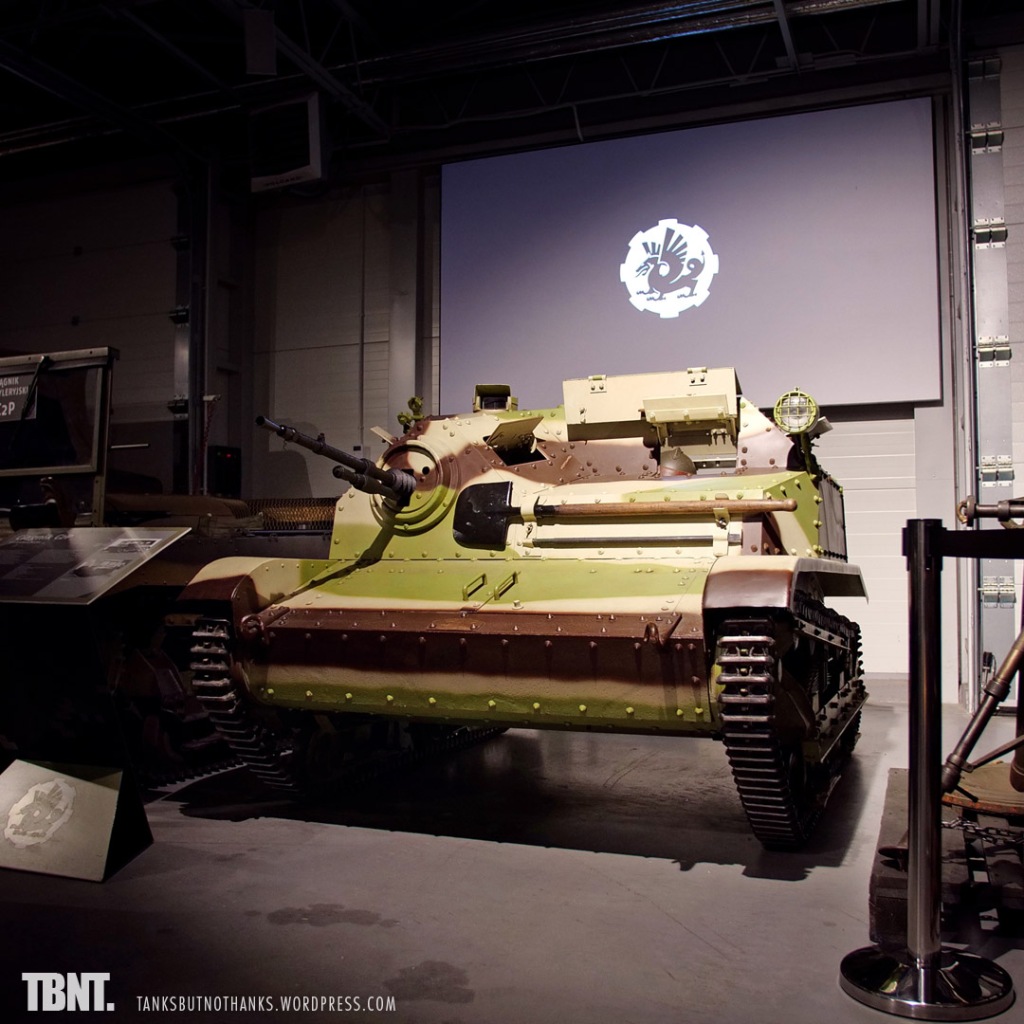
Tiny tank
The TKS was a small and highly maneuverable two-man „tankette“ used mainly for reconnaissance and infantry support. In 1929 Poland had purchased a Carden-Loyd Carrier from the United Kingdom and developed two open-topped derivatives, the TK-1 and TK-2, based on the British vehicle. The TK-3 was a fully enclosed version which, after many improvements such as a new engine and up to 10 mm of armour, became known as the TKS. Interestingly, there is no definitive explanation what „TK“ actually stands for.
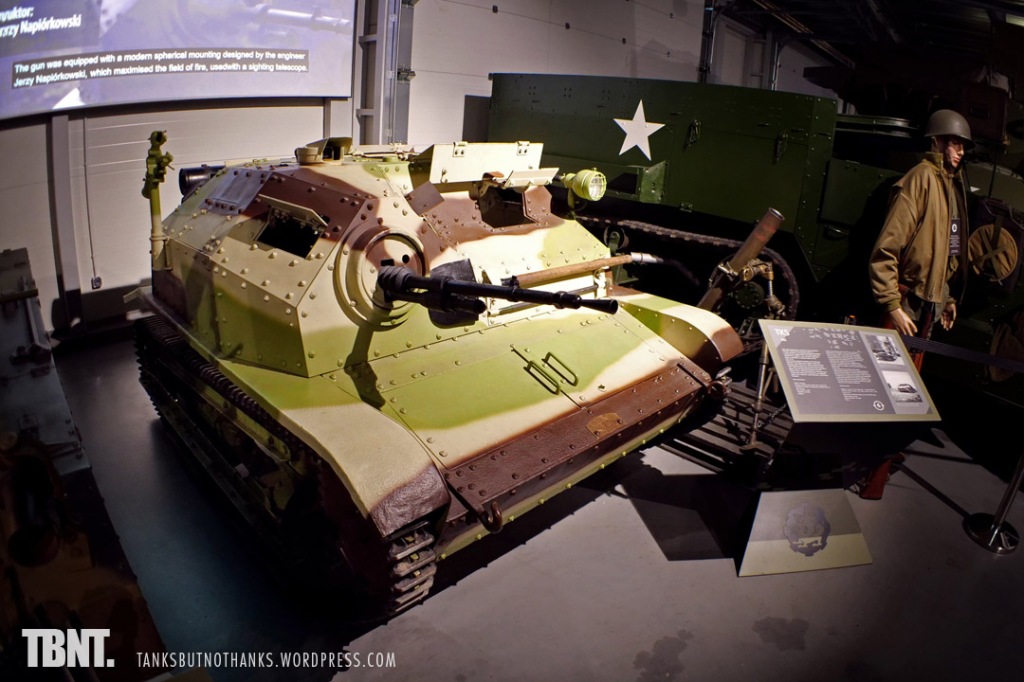
Low budget
Due to military budget restraints during the interwar years the tankette concept had become popular with several nations who could use some armoured support vehicles at very low cost. Great Britain had their ubiquitous Universal Carrier, France the Renault UE Chenillette and Italy the Carro Veloce 33. Even the German Panzer I was only marginally better armed: While the TKS was carrying a single 7.92 mm machine gun, the Panzer I had two. At the start of World War 2 the TK tankettes were the most numerous armoured vehicles in the Polish Army: 575 units of all types, compared to only about 150 7TP light tanks. Since their machine guns were not effective against enemy armour, the TK-3s were to be up-armed with 20 mm autocannons – but only 24 out of 280 vehicles were completed by the time Nazi Germany invaded.
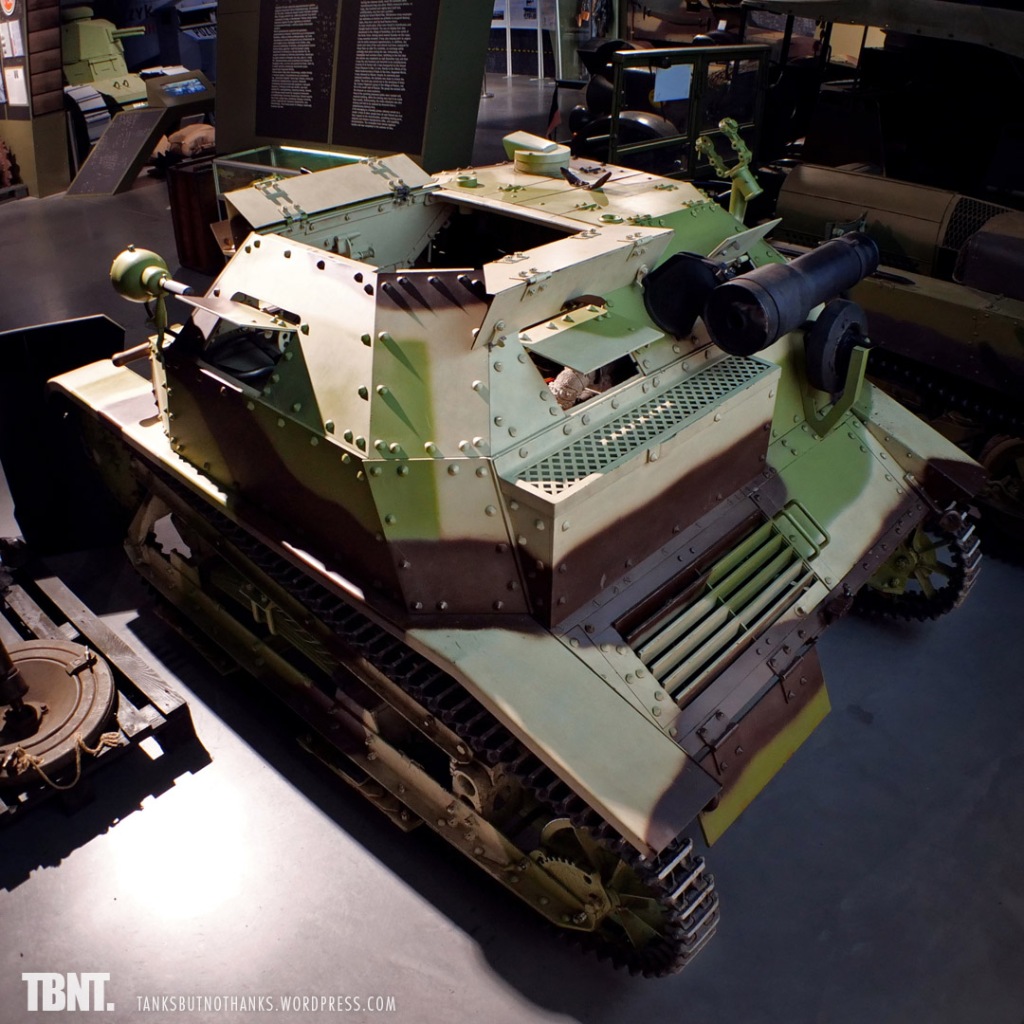
Rusting up north
This particular vehicle was captured by the Wehrmacht in 1939. In the following year it was transferred to a German air base on the Varanger Peninsula in northern Norway to become an ammunition tractor. After the war its new Norwegian owners used it for farmwork until it eventually broke down. In 2012 the wreck was returned to Poland as a gift by the Kingdom of Norway and the Norwegian Armed Forces Museum in Oslo. It took the „Armour Magicians“ at Artur Zyl‘s workshop in Pławce (who also overhauled the Museum of Armoured Warfare‘s 2S7 Pion) 18 months to completely restore the vehicle to operational condition.

-
Saint-Chamond
Type: Heavy Tank
Nation: France
Period: World War 1
Location: Musée des Blindés, Saumur, France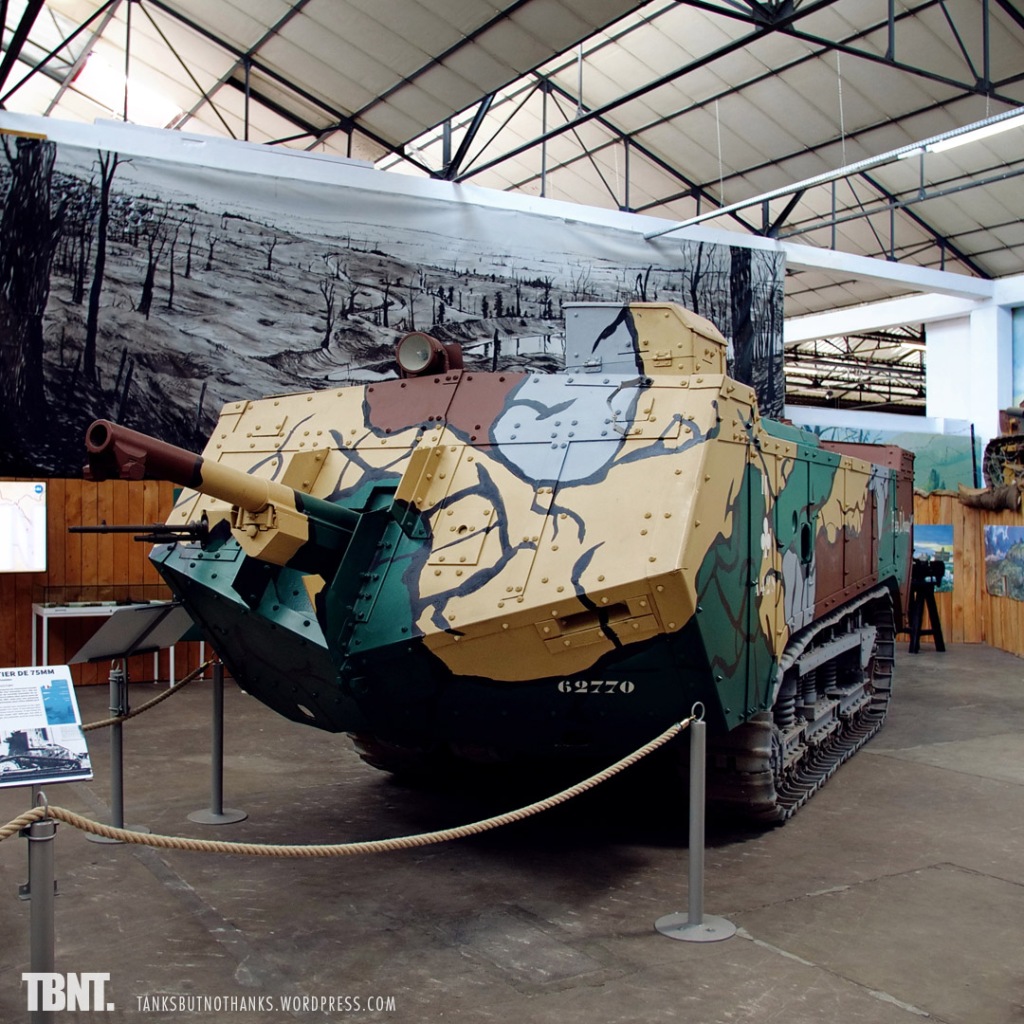
Armoured pioneer
The Saint-Chamond was the second French tank ever to be fielded in May 1917. It was developed in parallel to the rival Schneider CA1, used the exact same Holt caterpillar tractor chassis and was also equipped with a 75 mm gun in a fixed casemate – like all early tanks before the revolutionary Renault FT introduced the rotating gun turret. And just like all early tanks (including the British rhomboids from the Mark I to the Mark V) the Saint-Chamond was designed to overcome enemy trenches. Its distinctive overhang was supposed to crush obstacles, but it often led to the vehicle getting stuck in the mud.

Sophisticated steering
The 22-ton behemoth was crewed by eight men: A commander/driver, a gunner/loader plus an assistant gunner for the main armament, four machine gunners and a mechanic. The tank was steered by a rather advanced gasoline-electric transmission which used a four-cylinder engine powering one electric motor for each track. The vehicle‘s name refers to the town of Saint-Chamond in the Loire department, where its manufacturer FAMH was based. A formidable 400 units were built – compared to 1,200 British Mark IVs and only 20 German A7Vs.

Mobile centenarian
This particular vehicle at the Musée des Blindés is the last surviving Saint-Chamond. It had been on display for decades at the now closed U.S. Army Ordnance Museum at Aberdeen Proving Ground (Maryland, USA) until it was donated to the French government in 1987. From 2015 to 2017 it was restored back to running condition to celebrate the centenary of the first operational use of tanks in the Great War.
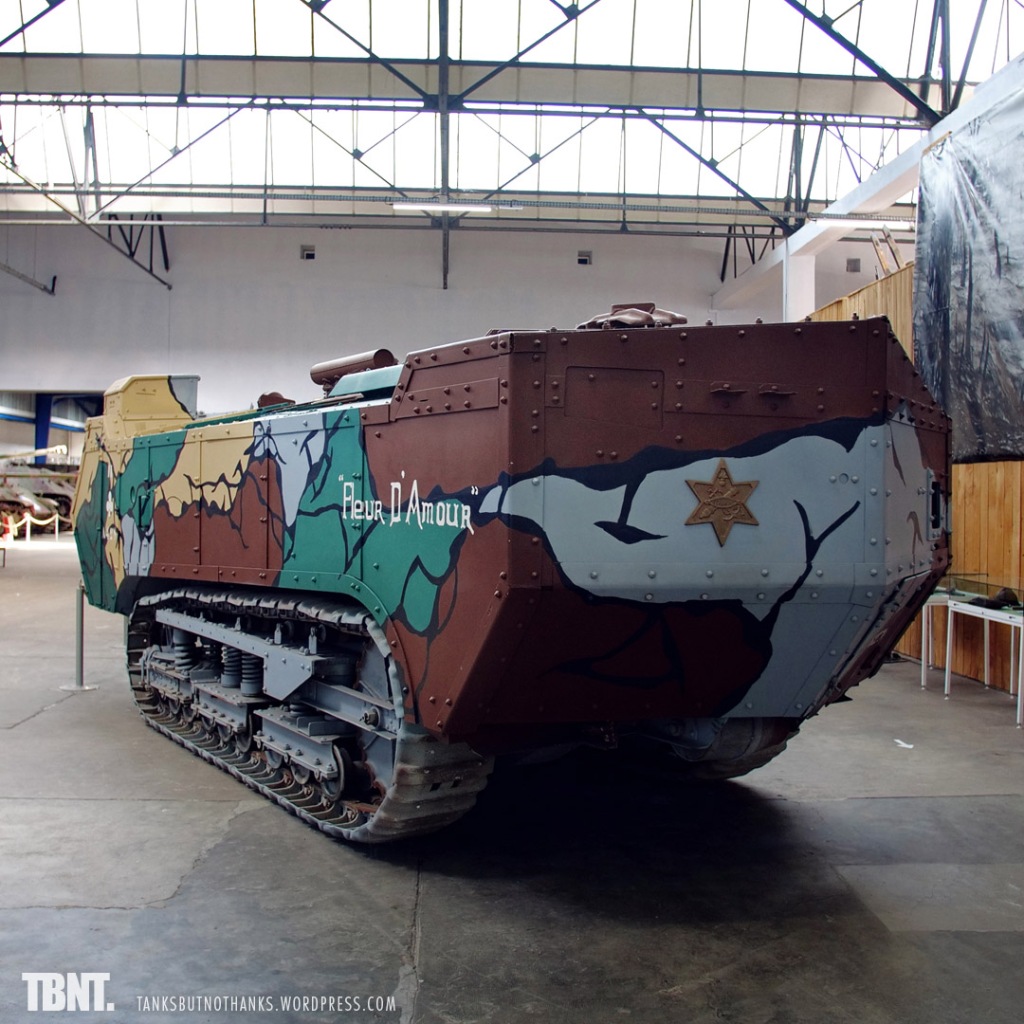
-
IS-3
Type: Heavy Tank
Nation: Soviet Union
Period: Cold War
Location: Muzeum Broni Pancernej w Poznaniu, Poznań, Poland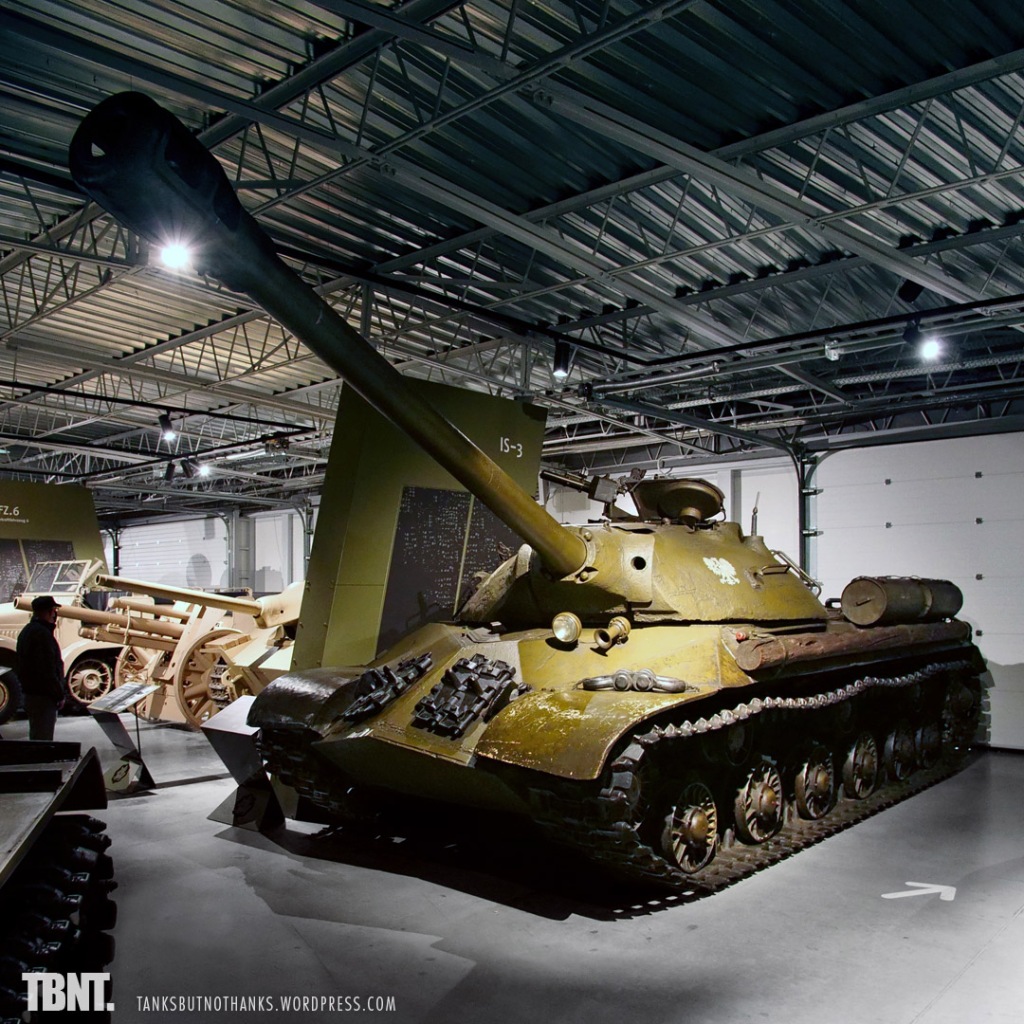
Berlin tank panic
The IS-3 caused a serious shock among the Western Allies when it was first presented publically while taking part in the Berlin Four Nations Victory Parade on 7 September 1945. Having just celebrated the end of the Second World War, the world was now on the edge of stumbling into the next confrontation between superpowers – and the West had nothing of the like in its arsenal; only the much less powerful M26 Pershing. The Soviet Union‘s latest heavy tank had been developed on the basis of the IS-2. It kept the same 122 mm gun, the same 12-cylinder 600 hp V-2 diesel and the same transmission, but it offered the crew much better protection due to the frying pan-shaped turret and the distinctively angled hull armour, which gave the tank the nickname „Shchuka“ (= pike).
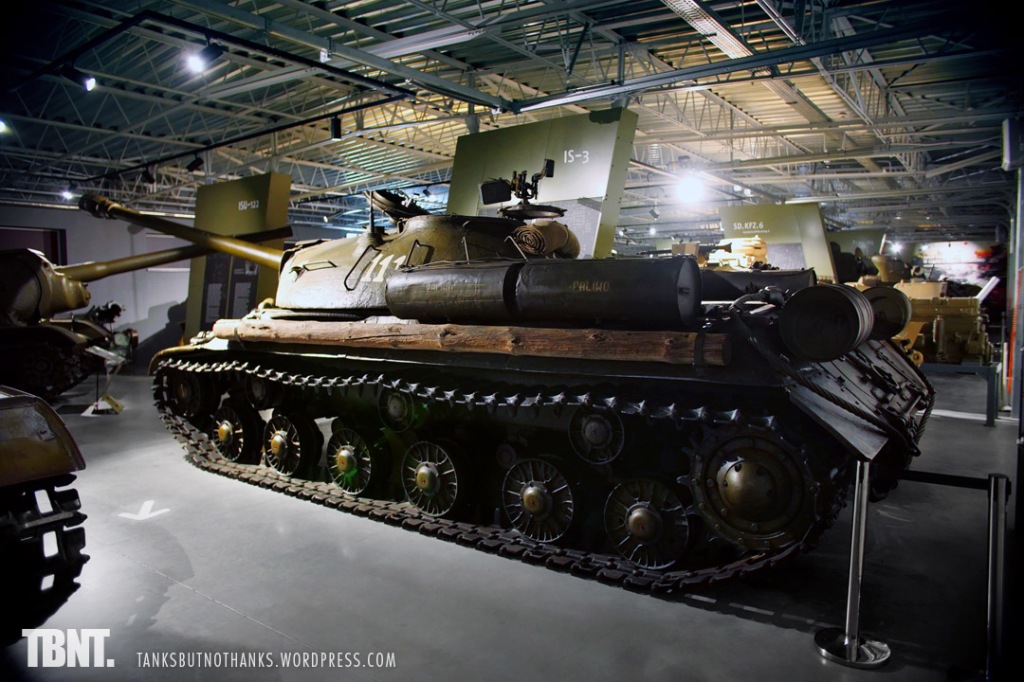
Too late and yet the first
The IS-3 had been designed during World War 2 to withstand the Tiger II’s 88 mm gun at combat distance, but it came too late to see any action in Europe. The first vehicles were rushed into production and therefore suffered severe mechanical problems such as cracking weld lines and failing transmissions. Of course the Western Allies had no idea about all that and quickly started developing their own heavy tank programmes to counter the IS-3, eventually resulting in the American M103 and the British Conqueror. So even if the „Iosif Stalin 3“ may not have been a very effective design itself, it’s impact on tank design worldwide cannot be understated.
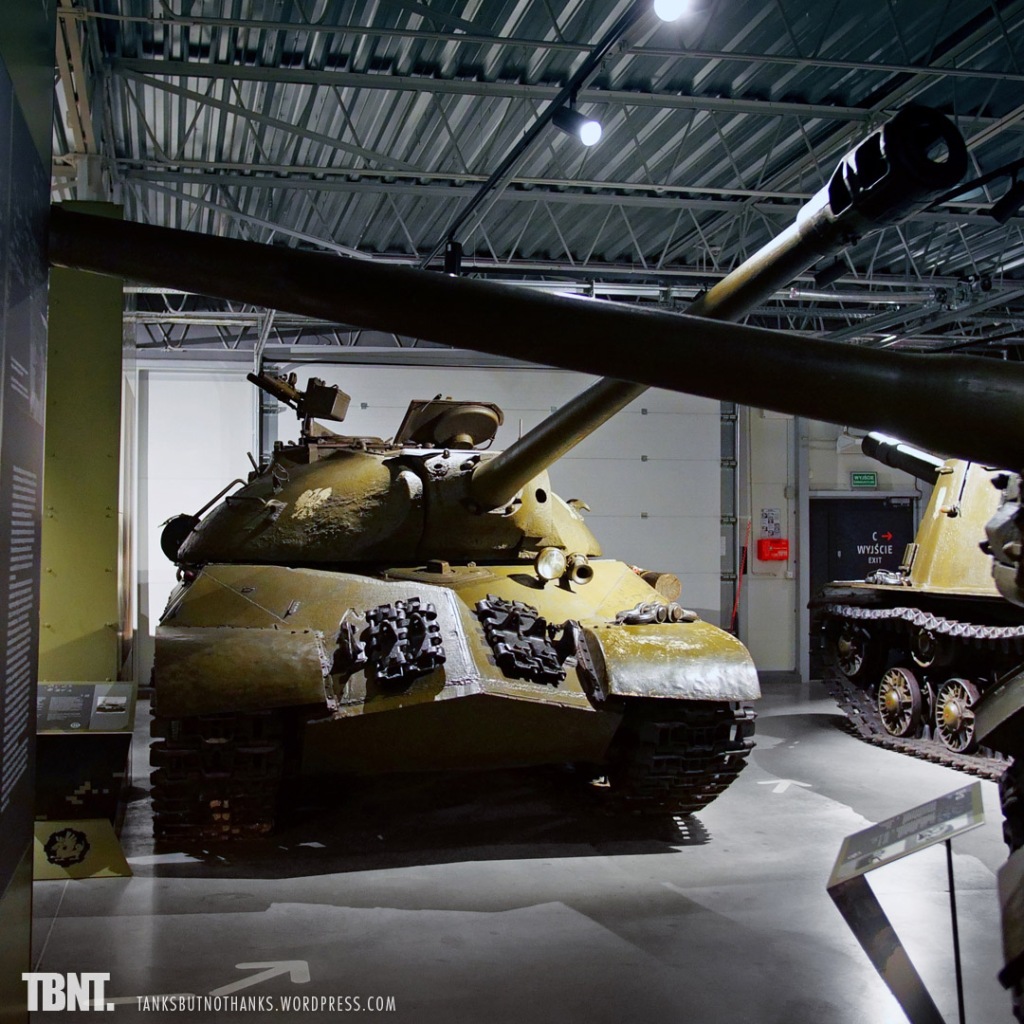
Heavy twins
This particular vehicle is one of only two IS-3s that were given to the Polish Army shortly after the war‘s end. It was trialled in Poznań and took part in parades and celebrations, but the Poles never adopted the IS-3 for their armoured units. This tank with the turret number 111 came to the Museum of Armoured Warfare in the 1960s. The other Polish IS-3 can be seen on display at the Museum of Polish Military Technology in Warsaw.

-
Kampfpanzer 70
Type: Main Battle Tank/Experimental Prototype
Nation: USA/Germany
Period: Cold War
Location: Deutsches Panzermuseum Munster, Germany
Another joint venture
The KPz 70 was a German-American attempt to develop a shared next-generation main battle tank. This vehicle was intended to replace both countries‘ fleets of M48s, M60s and Leopards (which had not even entered service at that point). The design phase started in 1963 and resulted in several prototypes on both sides of the Atlantic. But like the earlier cooperation between France, Italy and West Germany to build a joint tank (which eventually led to the AMX-30 and Leopard 1), the project was not to be successful. In 1969 it was cancelled due to different requirements, opposing priorities and exploding costs.
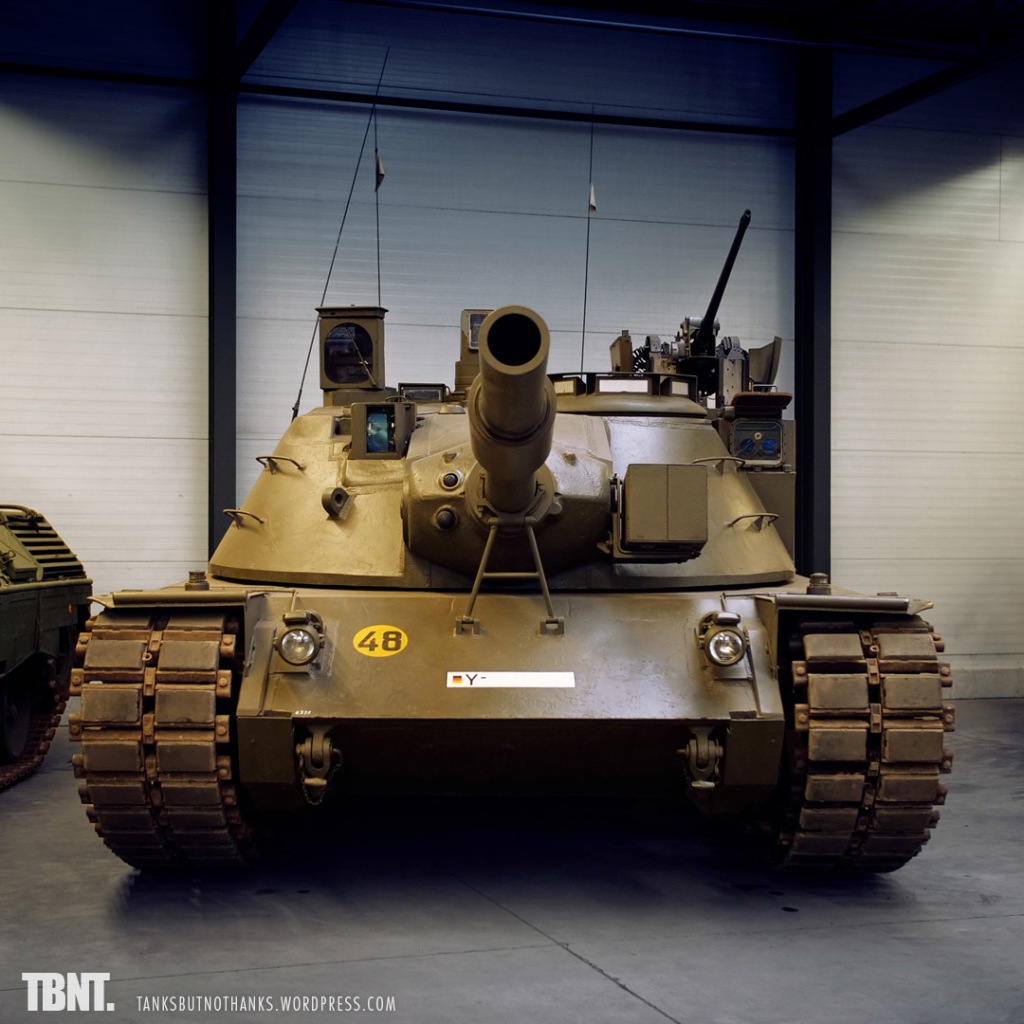
The tank of the future
The MBT-70 had an unconventional crew layout: Like the Soviet T-64 and T-72, the use of an autoloader reduced the crew to three men. But opposed to the Eastern Bloc vehicles, the whole crew was seated in the NBC-protected turret – even the driver, who had to sit in a counter-rotating compartment which kept him looking forward at all times and often resulted in motion sickness. On the plus side, the tank‘s hull was very low. Its silhouette could be reduced even more by the height-adjustable hydropneumatic suspension system. The main armament was a 152 mm smoothbore gun which could fire both conventional rounds and the Shillelagh missiles which had been developed for the American M551 Sheridan light tank.

Learning from mistakes
This particular vehicle at the DPM is one of two remaining prototypes that can be seen in Germany; the other one is located at the Wehrtechnische Studiensammlung Koblenz. Three of the American prototypes are on display in the US. Although the ambitious MBT-70 was a failure, it was certainly not a waste of time. Based on the gathered experiences, in the 1970s the United States and West Germany independently went on to develop the very successul M1 Abrams and Leopard 2.
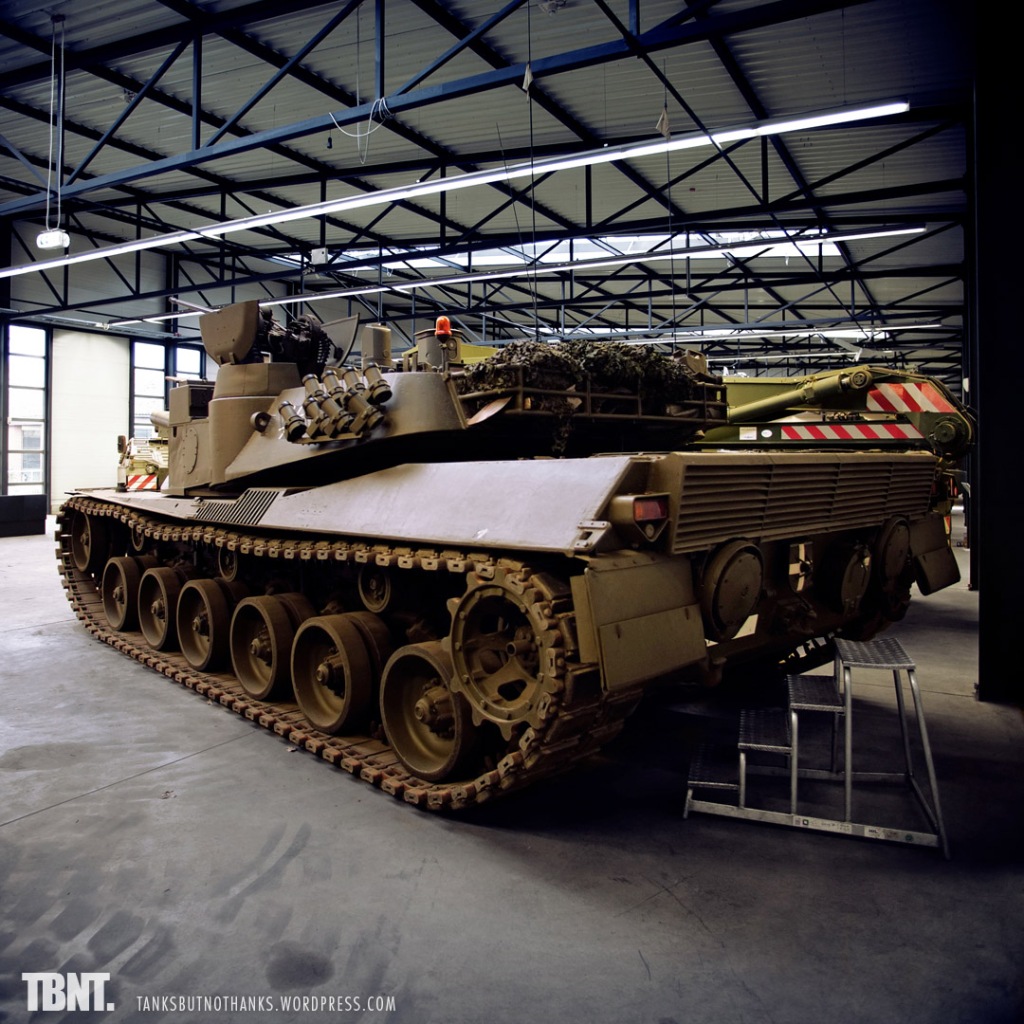
-
Infantry Tank Mk II A12 Matilda II “The Princess Royal”
Type: Infantry Tank
Nation: United Kingdom
Period: World War 2
Location: The Tank Museum, Bovington, UK
Queen of the desert
The 27-ton Matilda II was one of the most heavily armoured tanks of its time, comparable only to the French Char B1 bis. Designed as an infantry tank, its role was to break through enemy lines – so being able to take a punch was therefore more important than speed and mobility. The first prototype had been ready in April 1938, but as production went slowly only two dozen Matilda IIs were deployed in France to face the German invasion in the summer of 1940. In the first half of World War 2 the Matilda proved to be a tough opponent for the Axis forces, earning it the nickname “Queen of the desert” in North Africa.
Old glory
This particular vehicle was manufactured by the North British Locomotive Company on 28 May 1941. It was used at the School of Tank Technology in Bovington and became a part of The Tank Museum’s collection in 1949. For decades it was painted in the distinctive “Caunter” desert camouflage scheme and bore the name “Golden Miller” From 2015 to 2018 it was extensively restored back to running condition – the documentation of which can be found on YouTube. Nowadays it is called „The Princess Royal“ in honour of Princess Anne, who opened the museum’s workshop. The tank regularly participates in the museum’s live events alongside its old opponents such as Tiger 131 and an Afrikakorps Panzer III.

-
Infantry Tank Mk I A11 Matilda “Demon”
Type: Infantry Tank
Nation: United Kingdom
Period: World War 2
Location: The Tank Museum, Bovington, UK
Mobile machine gun nest
The Matilda was the first tank specifically made to fit the British infantry tank concept of the 1930s. It was designed within only six months as a slow but heavily armoured two-man vehicle that was armed with a single machine gun to support advancing infantry. But as it soon became clear that an infantry tank would need a proper cannon to be effective, only 140 Matildas were built. Work on the much-improved successor Matilda II had begun already before the Matilda I entered service.

Lame duck
The first prototype was ready for testing in September 1936 and it failed to impress anybody. The small 11-ton tank was powered by a 70 hp Ford V8 and could only reach 13 kph on the road. However, its 60 mm thick frontal armour proved to be one of its few plus points on 21 May 1940, when 58 Matilda Is (and 16 Matilda IIs) counter-attacked the Germans at Arras and temporarily delayed the 7th Panzer Division’s progress.

Eye for an eye
This particular vehicle at The Tank Museum was built in March 1940. It is painted to resemble a tank of the 4th Royal Tank Regiment which was deployed with the BEF in France. “Demon” features a set of traditional Chinese Eyes on the turret – a symbol that is supposed to protect British tank crews by enabling them to “see”. This custom was started in 1917 when a Mark V with a pair of eyes was presented to the British Government by a Malayan council member who had taken the idea from Chinese boats. To this day, all tanks of the 4th RTR are decorated with these eyes.

-
Merkava Mk. I/II
Type: Main Battle Tank
Nation: Israel
Period: Cold War
Location: Deutsches Panzermuseum Munster, Germany
Do it yourself
When the State of Israel was established in 1948, its government was facing the difficult task of creating a capable army as soon as possible because of the country‘s very specific situation. For the following decades the Israel Defense Forces (IDF) would have to rely on purchasing foreign tank models – mostly the American-made M4 Sherman (later heavily modified as the M50 and M51), the French AMX-13 and eventually the British Centurion. But when the French and British governments cancelled all weapons deliveries in the late 1960s, Israel finally decided to start an indigenous tank programme which was to be tailor-made to meet their unique set of requirements.

Radically different
The first prototype of the Merkava (Hebrew for „chariot“) was ready by 1974 and was fundamentally different from any other main battle tank of the time, such as the American M60 or the Soviet T-72. Since survivability was of highest priority, the engine was mounted in the front where it could act as an additional barrier between the four-man crew and incoming threats. This also made the vehicle‘s interior comparatively roomy and allowed for a door on the back of the hull through which the crew could access the fighting compartment and perform tasks like restocking ammunition for the 105 mm main gun more easily.
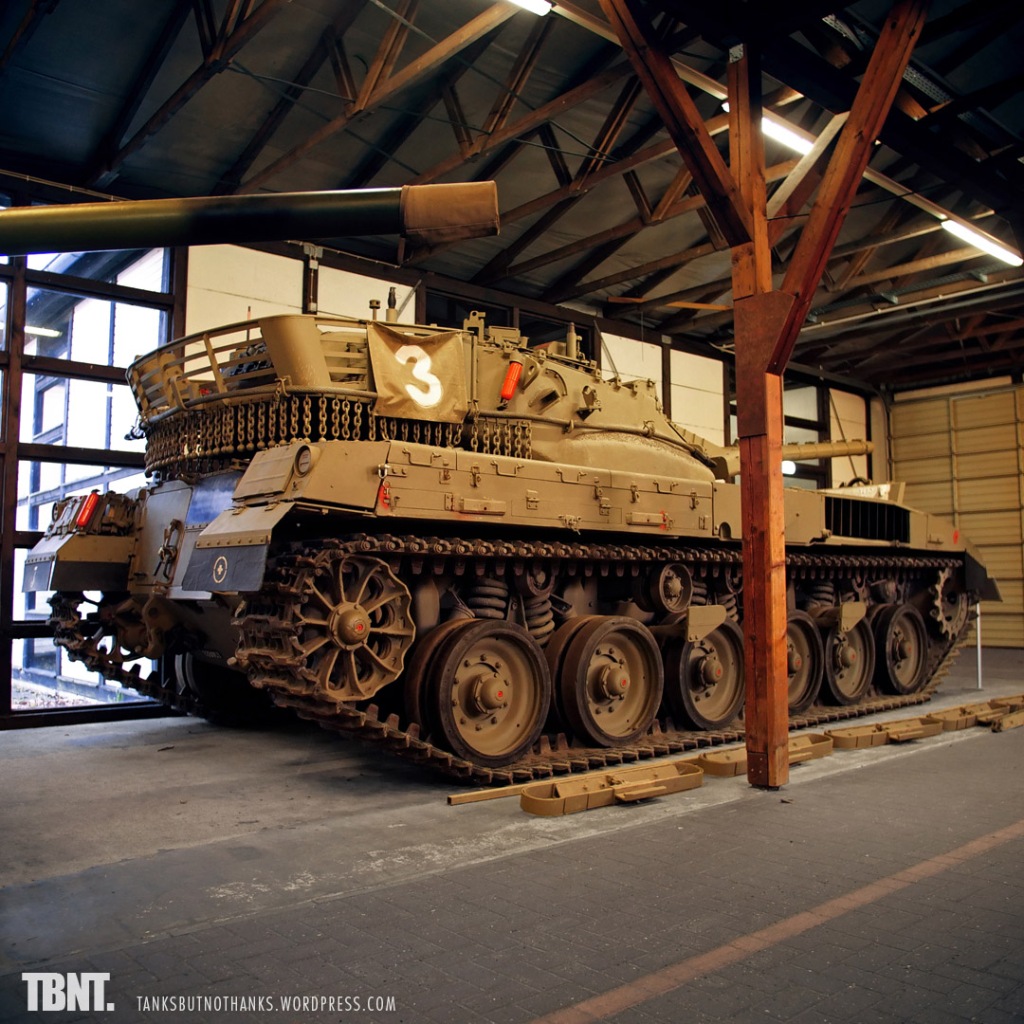
Safety first
All hydraulic components of the turret traverse mechanism were located as far away from the crew as possible to reduce the risk of injury in case there was a leak after a direct hit. Instead of utilising a torsion bar suspension system like most modern tanks, the Merkava was running on externally mounted coil spring bogies which were much easier to repair and replace in the field. In 1979 (the same year the German Leopard 2 was introduced) the first units were equipped with the new 63-ton tank. Its combat debut would follow already three years later in the 1982 Lebanon War.
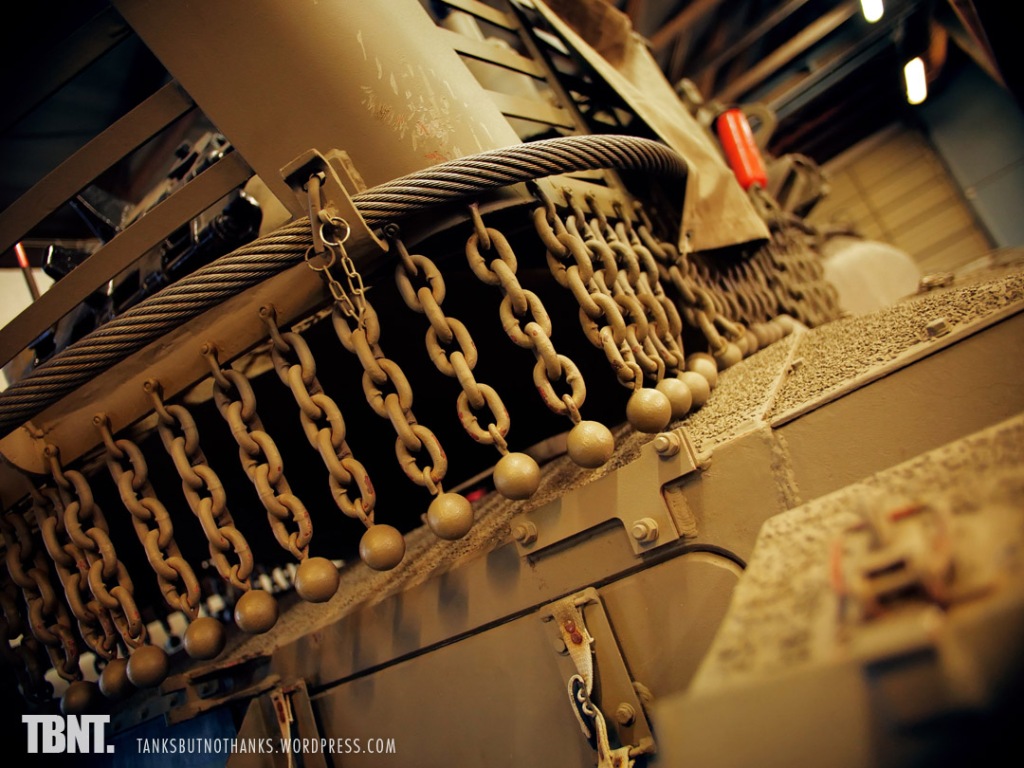
Modernised gift
This particular vehicle at the DPM was given to Germany by the State of Israel as a gesture of gratitude after they had been gifted a Leopard 1. The tank that arrived in Munster in 2005 is a Mk. I model that has been upgraded to the Mk. II standard. The Mk. II had first been introduced in 1983 as a reaction to the experiences in Lebanon. Most notably, the space below the turret bustle had turned out to be a shot trap. The Mk. II was therefore equipped with a distinctive steel chain curtain which was supposed to prematurely detonate hollow-charge warheads. Other changes included the appliance of an anti-slip coating on the vehicle’s horizontal areas and a revised roof-mounted mortar which could be loaded and fired safely from the inside.
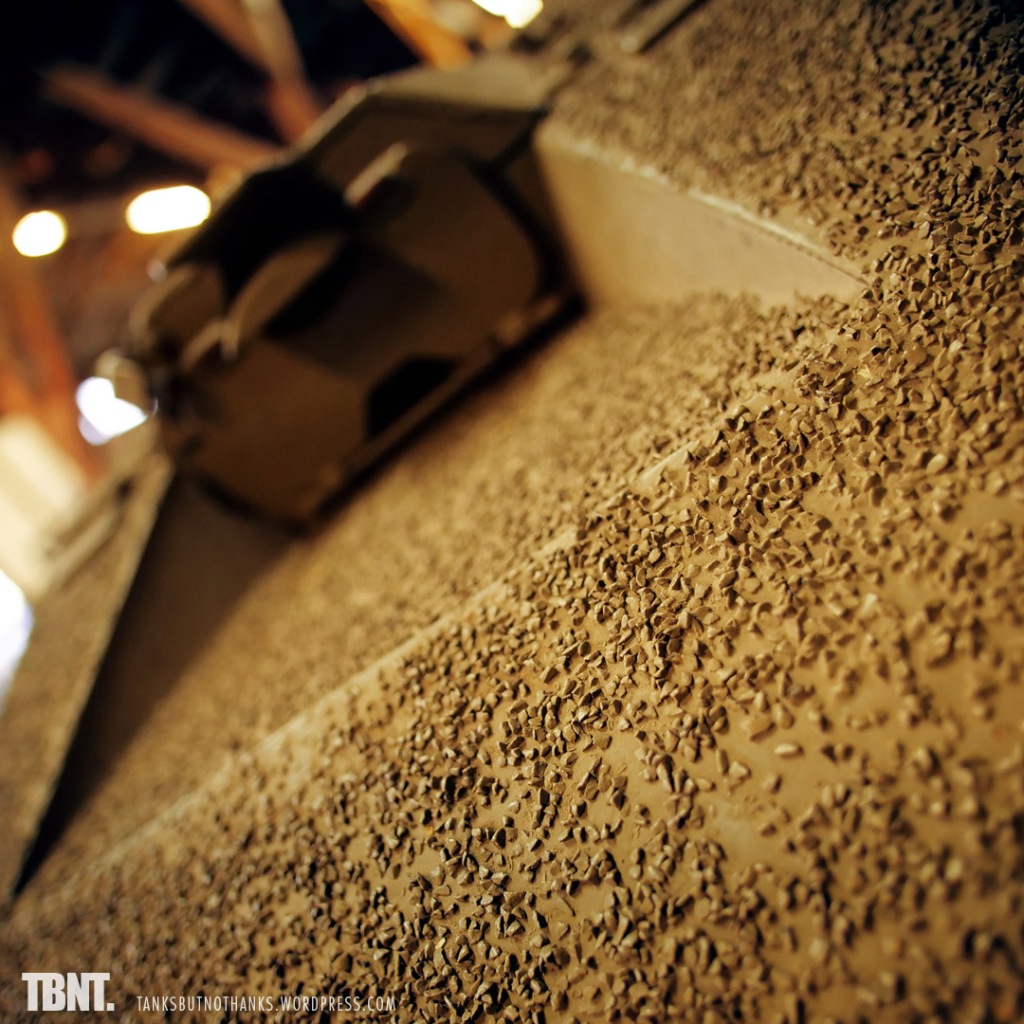
tanks_butnothanks
A travelling history nerd with a camera and a mild interest in tanks.
